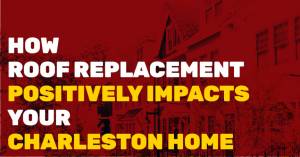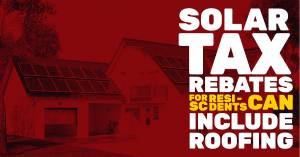
Insulation in walls and attic works year-round to lower energy bills and keep your family comfortable in your Savannah home. In the south, insulation often proves its value more in summer than in winter, but do you know why?
Insulation in the Summer
Insulation itself is not the important feature of that fluffy stuff — it is the air it traps. Spun fiberglass or cellulose insulation’s power is in trapping millions of air molecules to form a barrier between outside and inside temperatures.
A properly insulated Savannah attic has high, fluffy insulation to prevent heat transfer by conduction or convection. Conduction and convection are two of only three ways heat moves on earth.
Conduction requires solid substances to touch to transfer, like wood framing members and ceiling drywall. Convection requires air currents to move heat.
If you can interrupt either of those transfers, you reduce the heat load on your central air conditioner. That lowers your energy usage and trims your energy bills.
Sounds Too Simple!
The millions of trapped air molecules trapped in insulation form a virtual wall between outside air temperatures and your cooler indoor temperatures. Heated particles near your Savannah home’s roof cannot easily transfer their heat to the slower-moving, trapped particles. Insulation over attic joists prevents conduction, too.
Your summer cooling bill will be lower in direct relationship to the height of your insulation (within reasonable limits). Fluffy, full insulation does a better job than tamped down, settled or damp insulation.
Help Your Roof
Your roof breathes more easily atop a well-insulated attic, as well. The underside of your roof should have a steady flow of air coming from your soffit vents (under the eaves) up to ridge vents, where the heat rises out. The attic temperatures should be roughly the same as outside temperatures. This keeps your roof at a steady, predictable temperature and puts minimal strain on roofing materials.
Why Settle?
Older insulation settles from gravity, from anyone walking on it, and from humidity compacting the fiberglass. A quick and economical solution is to have a professional contractor add insulation to restore your attic’s insulating power.
Tri County Roofing is your local, trusted professional for insulation. Contact us today to set up an appointment. We can take a look at your insulation, recommend solutions, and work out a convenient schedule for the work.
Insulation is a critical component for keeping your home warm during the winter. Without adequate insulation, your home gets cooler faster, which means your heating bills keep rising. The power of insulation means your home stays warmer for longer while lowering your heating bills in the process.
How does insulation work in the cold?
Heat naturally transfers to surrounding areas with a cooler temperature. In the winter, that means the heated air inside your home wants to transfer its energy to the cooler air in the attic or outside. Insulation provides a barrier to this heat transfer. While it cannot stop it completely, it can slow down the process significantly. How much the transfer gets slowed down is determined by the R-value of the insulation.
R-value refers to how much resistance a given thickness of material has to heat transfer. The higher the R-value, the more resistance it has. And the more insulation value it has. A solid piece of wood, one-inch thick, has an R-value of 1. (For reference, the recommended attic insulation R-value for homes in the Charleston area is R-30 or higher. )
The Reality of Older Insulation
Two of the more common attic insulation materials are loose fill and batting. Loose fill insulation is usually made from cellulose or fiberglass. Batting is most commonly fiberglass.
When first installed, these types of insulation are loose and fluffy, which means they are at maximum R-value, since the air trapped in their fibers help to elevate the insulating value of the material. Over time, however, these insulation materials start to settle and the trapped air starts to escape. This lowers the R-value of the insulation which means more of your heated air can transfer its energy to the unheated air on the other side.
How can you tell if your insulation is losing its R-value? It can be hard for an untrained eye to determine if the current insulation materials are enough. That is why it is important to call in insulation experts. They can measure the insulation levels and determine whether the current insulation levels are adequate or if they need to be enhanced.
If you think your insulation could use a check-up, call on the experts at Tri County Roofing. We have been proudly serving our neighbors in the Charleston area since 1973.






